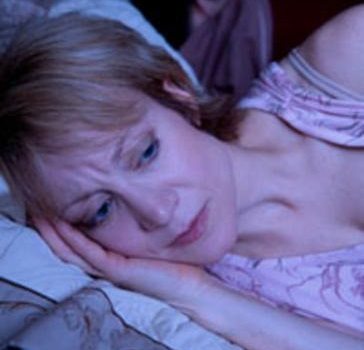Adult Anxiety Disorders

Anxiety Disorders are one of the most common emotional disorders observed in the population. Anxiety Disorders include Generalized Anxiety Disorder, Obsessive-Compulsive Disorder, Social Anxiety Disorder, Panic Disorder, and Specific Phobia. Anxiety disorders can affect functioning in academic, work, and social situations as well as deplete an individual’s overall quality of life. Adults suffering from symptoms of anxiety likely will have experienced anxiety at different times throughout much of the course of their life. Anxiety can be worsened or exacerbated by life stressors. There are a number of different subtypes of anxiety disorders and adults may experience more than one. Anxiety can lead to symptoms of depression as well as increased irritability, frustration, and agitation. Anxiety will also commonly inhibit adults from participating in activities or taking chances that limit their potential and prevent more positive experiences.
The good news is that anxiety is often responsive to counseling or therapy. The bad news is that it can be uncomfortable for adults to begin the process of counseling as talking about symptoms of anxiety can in some cases initially increase anxiety. It is unfortunate that some individuals will suffer with symptoms of anxiety when there are effective treatments for anxiety available. While it can be embarrassing to discuss these problems, a supportive therapy relationship provides a nonjudgmental atmosphere to explore worries, gain feedback, and learn skills to control feelings of anxiety. Many adults don’t realize that there are countless others experiencing many of the same symptoms they are. Counseling or therapy can be used in addition to medication management.
Counseling goals for treating anxiety disorders typically include:
Provide thinking based strategies to help reduce physical and emotional feelings of anxiety and control worrying
Teach behavioral and calming strategies to reduce physical and emotional symptoms of anxiety
Gain insight and exposure to fearful thoughts and situations so that these events no longer trigger anxiety and panic responses
Develop problem solving strategies and build skills to gain mastery and increased control over situations that cause anxiety
Replace negative automatic thinking and worry with more realistic and optimistic thinking and beliefs
The causes of anxiety can include a temperamental vulnerability or increased sensitivity some are born with, genetic transmission, increased life stressors, ineffective coping strategies, early life traumas, or tendency toward a negative thinking/cognitive approach. Counseling and therapy can help reduce symptoms of anxiety. There are a variety of specific treatments that have been shown to be helpful in alleviating symptoms of anxiety. Many of these treatments focus on education and guidance in thought-based or cognitive strategies using an approach referred to as Cognitive-Behavioral Therapy. Effective counseling may also focus on behavioral strategies to help reduce physical symptoms of anxiety and enhance control and tolerance of physical and emotional symptoms associated with anxiety. Finally, education into the nature of specific anxiety disorders and helpful treatments can help individuals identify and remove the false warning signs that often trigger feelings of anxiety. Subtypes of anxiety disorders include: Generalized Anxiety Disorder, Panic Disorder, Social Phobia, specific phobias, Obsessive Compulsive Disorder, and Post Traumatic Stress Disorder.
Generalized Anxiety Disorder
Generalized Anxiety Disorder consists of excessive worrying and difficulty controlling thinking in addition to physical symptoms of anxiety such as nervousness, trembling hands, headache, rapid heartbeat, or stomach problems. Adults will often recognize that they worry too much and feel that they cannot stop it or it would be too difficult to do so.
Signs and symptoms may include:
Excessive worrying
Irritability or depression
Fear that something bad will happen to you or your loved ones
Difficulty sleeping or difficulty sleeping alone
Discomfort in new or unfamiliar situations
Poor concentration
Physical symptoms including upset stomach, headaches, complaints of pain

Panic Attacks / Panic Disorder
Men and women alike can experience panic attacks, which are short intense periods of strong anxiety accompanied by severe physical discomfort and feelings of anxiety. During a panic attack, an individual may feel as if they are losing control, dying, or going crazy. People may feel the need to try to escape a situation or seek medical assistance. Panic attacks can be triggered by a situation (such as a feared social situation) or can be triggered spontaneously. When panic attacks reoccur randomly without being triggered by a specific event this is often characterized as Panic Disorder. In many instances panic attacks occur within the context of another type of anxiety disorder and their origin can be traced to specific situations, events, or a fear. Adults may experience increased frequency of panic attacks during periods of high stress.
Signs and symptoms may include:
Increased heart rate or heart palpitations
Difficulty breathing
Shaking
Sweating and hot flashes
Nausea or vomiting
Feeling of losing control, needing to escape, dying
Dizziness, feeling faint, fear of passing out
Social Anxiety
Social Anxiety or Social Phobia is the extreme end of shyness in social situations. There are a range of personality types with some preferring to be more extroverted and some preferring to be more introverted. However, social anxiety can limit social relationships, the opportunity for new connections with others, and may even limit career potential. Adults with social anxiety may avoid social outings or group events and may feel extremely self-conscious in groups of people. Adults with social anxiety may feel that others do not like them, even though they often do not take the initiative to establish warm and friendly connections with others. Work, social events, or interpersonal confrontations may lead to extreme feelings of discomfort or panic. Social anxiety can effectively be treated by counseling. Thinking strategies, behavioral management of physical responses, and adjustments to socialization approaches can all aid in overcoming social anxiety.
Signs and symptoms may include:
Excessive shyness or discomfort in social situations
Physical symptoms of anxiety including nervous stomach, sweatiness, rapid heartbeat
Fear or avoidance of new situations that involve social contact
Exaggerated focus and negative appraisal of what others may be thinking about you
Obsessive Compulsive Disorder
Obsessive Compulsive Disorder consists of a combination of obsessions and compulsions. Obsessions are unwanted and uncontrollable thoughts that are typically worrisome, unusual, unrealistic, or inappropriate in nature. These thoughts cause anxiety for the individual experiencing them. Compulsions are ritualistic like behaviors that are performed in response to obsessive thoughts. Adults will typically recognize that the obsessions are irrational, yet feel they do not have the ability to control their thinking. Adults will often feel embarrassed about the content or nature of their obsessions and may sometimes feel as if they are the only ones experiencing such unusual or bizarre thoughts. Obsessive Compulsive Disorder is a common anxiety disorder that can be helped with cognitive and behavioral therapy.
Signs and symptoms may include:
Unusual or excessive behaviors such as counting, washing, or checking
Physical symptoms of anxiety
Difficulty functioning socially, occupationally, or in relationships due to obsessions or compulsions interfering or taking up too much time
Extreme rigidity of thought and behavior, black or white thinking
Feeling of not being in control of your own thoughts or behaviors
